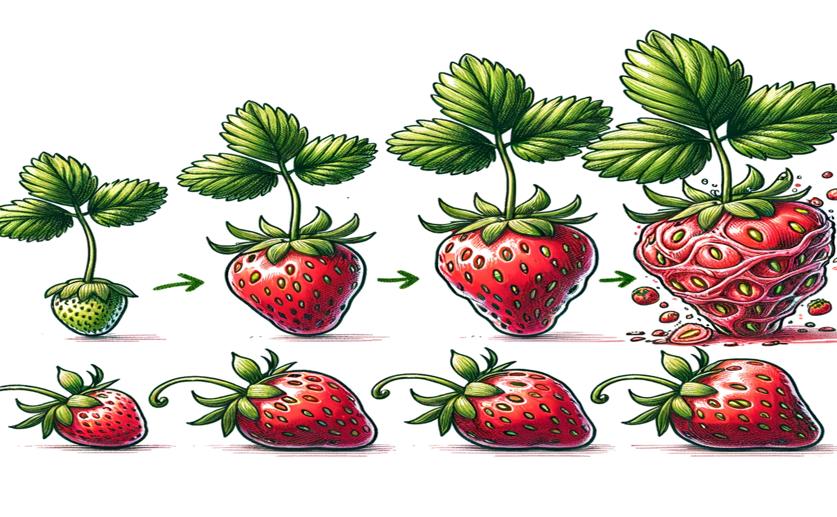
Strawberry Skin Stops Forming as the Fruit Grows
Jim Crocker
2nd July, 2024

Image Source: Natural Science News, 2024
Key Findings
- The study took place at Leibniz University Hannover and focused on understanding cuticle deposition in rapidly developing strawberry fruits
- Researchers found that cutin is actively deposited on the inner surface of the strawberry cuticle during fruit development
- The study revealed that cuticle deposition does not keep pace with the rapid increase in fruit surface area, leading to a thinning cuticle and increased strain
References
Main Study
1) Cuticle deposition ceases during strawberry fruit development
Published 29th June, 2024
https://doi.org/10.1186/s12870-024-05327-7
Related Studies
2) The formation and function of plant cuticles.
3) Protecting against water loss: analysis of the barrier properties of plant cuticles.
Journal: Journal of experimental botany, Issue: Vol 52, Issue 363, Oct 2001
4) Direct Evidence for a Radial Gradient in Age of the Apple Fruit Cuticle.



 25th June, 2024 | Jenn Hoskins
25th June, 2024 | Jenn Hoskins